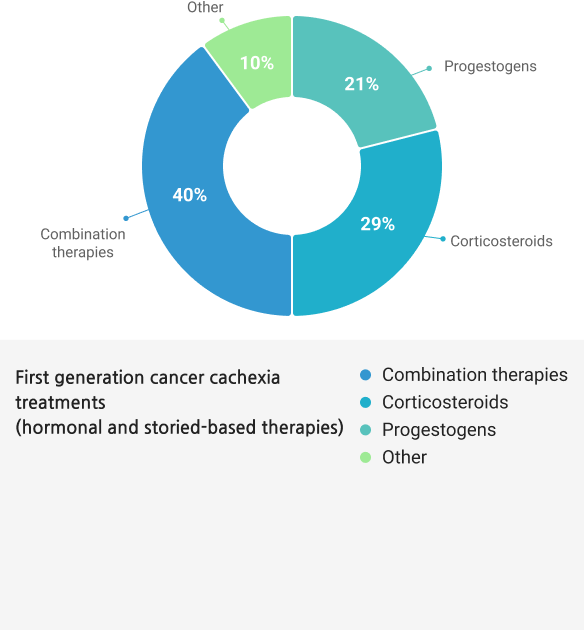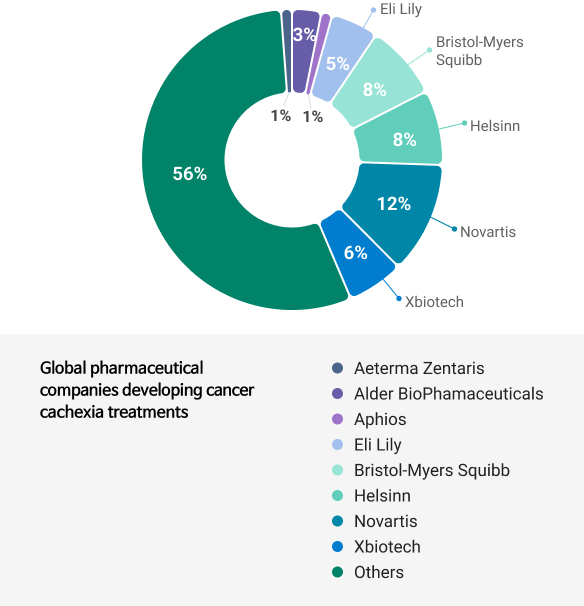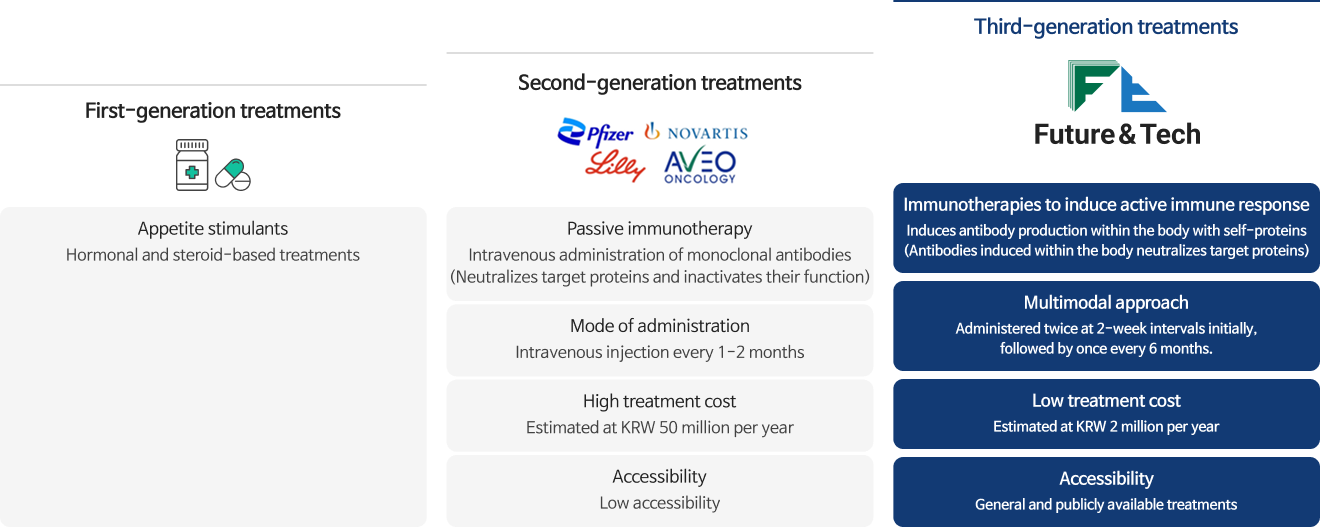Pipeline
You can scroll left and right to view the full content.
| Pipeline | Development Projects | Target diseases | Development of drug candidate | Safety test | Preclinical trials | Clinical trial - phase 1 | Clinical trial - phase 2 |
|---|---|---|---|---|---|---|---|
| FT005 | FT005-002 (Hulk) | Chronic kidney disease |
|
||||
| Sarcopenia (muscle atrophy with aging) |
|
||||||
| Muscular dystrophy |
|
||||||
| FT006 | FT006-001 (Batman) | COVID prevention |
|
||||
| FT007 | FT005-002 (Hulk) | Cancer cachexia |
|
||||
| FT005-007 (Steve) |
|
||||||
| FT009 | FT005-002 (Hulk) | Type 2 diabetes |
|
||||
| FT011 | FT005-005 (Paul) | Melanoma (skin cancer) |
|
||||
| FT012 | FT005-004 (Kyte) | Melanoma (skin cancer) |
|
FT005-007 (Steve) project (target antigen: GDF-15)
- Cancer cachexia is a condition that leads to rapid muscle loss in 50%-80% of all cancer patients.
Current status of cancer cachexia treatments
Prescription of hormonal and steroid-based therapies (first-generation treatments) to stimulate appetite.
- Prescriptions are based on combination therapies due to their limited efficacy on stimulating appetite.
- Moreover, mere stimulation of the appetite alone cannot address the root causes of cancer cachexia, which involve inflammatory cytokines, changes in the neuroendocrine system, the synthesis and degradation of skeletal muscle proteins, and alternations in energy metabolism.
- Global pharmaceutical companies are shifting their focus toward second-generation immunotherapies to address the root causes of cancer cachexia.
- According to ClinicalTrials.gov, a total of 90 studies are in progress to develop treatments for cancer cachexia as of August 2021, among which 22 research focus on second-generated therapies.
Challenges of second-generation cancer cachexia treatments
Development of cancer cachexia treatment technology
(1) GFRAL : Glial cell-derived neurotrophic factor (GDNF) family receptor α-like(2) RET : Rearranged during transfection
Solving the root causes of cancer cachexia Developing a immunotherapy for cancer cachexia targeting both GDF8 & GDF15 using GRAS Organism Surface-display Technique (GOST™)
Advantages of Future & Tech’s Technology
- Multimodal approach
- Induces muscle growth: targets GDF8 to suppress muscle loss and induce muscle formation
- Restores appetite: targets GDF15 to recover appetite and activate energy metabolism
- Suppress chronic inflammation: targets GDF8 for expected anti-inflamatory effects
- Simple manufacturing process: mass production of raw materials with large-scale culture of lactic acid bacteria
- Reduces treatment cost: minimizes treatment cost with just two intramuscular injections per year (KRW 2 million / person / year)
Market size and commercialization plan
Total cancer cahexia market size (2025): USD 2.97 billion (approximately KRW 3 trillion. FX: 1,045 KRW/USD)
References: Cancer Cachexia Market: Growth, Trends, COVID-19 Impact, and Forecasts (2021-2026), Mordor Intelligence- Technology transfer after initiating phase 1/2a clinical trials: Expect technology transfer revenue of KRW 150 billion (5% of the total cancer cachexia market)
- Technology transfer after initiating phase 2b clinical trial: Expect technology transfer revenue of KRW 300 billion (10% of the total cancer cachexia market)
Cookie notice
By clicking 'Accept all cookies', you agree to the storing of cookies on your device and to the associated processing of data to enhance site navigation, analyse site usage, and assist in our marketing and performance efforts.
Cookie Consent Settings
- Strictly Necessary Cookies
- Functional Cookies
- Marketing/Advertising Cookies
- Statistics Cookies




